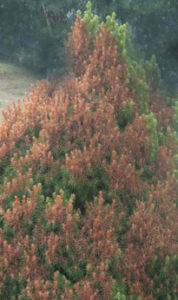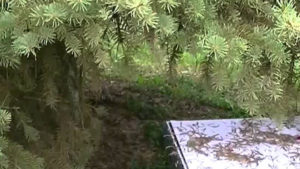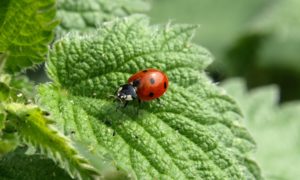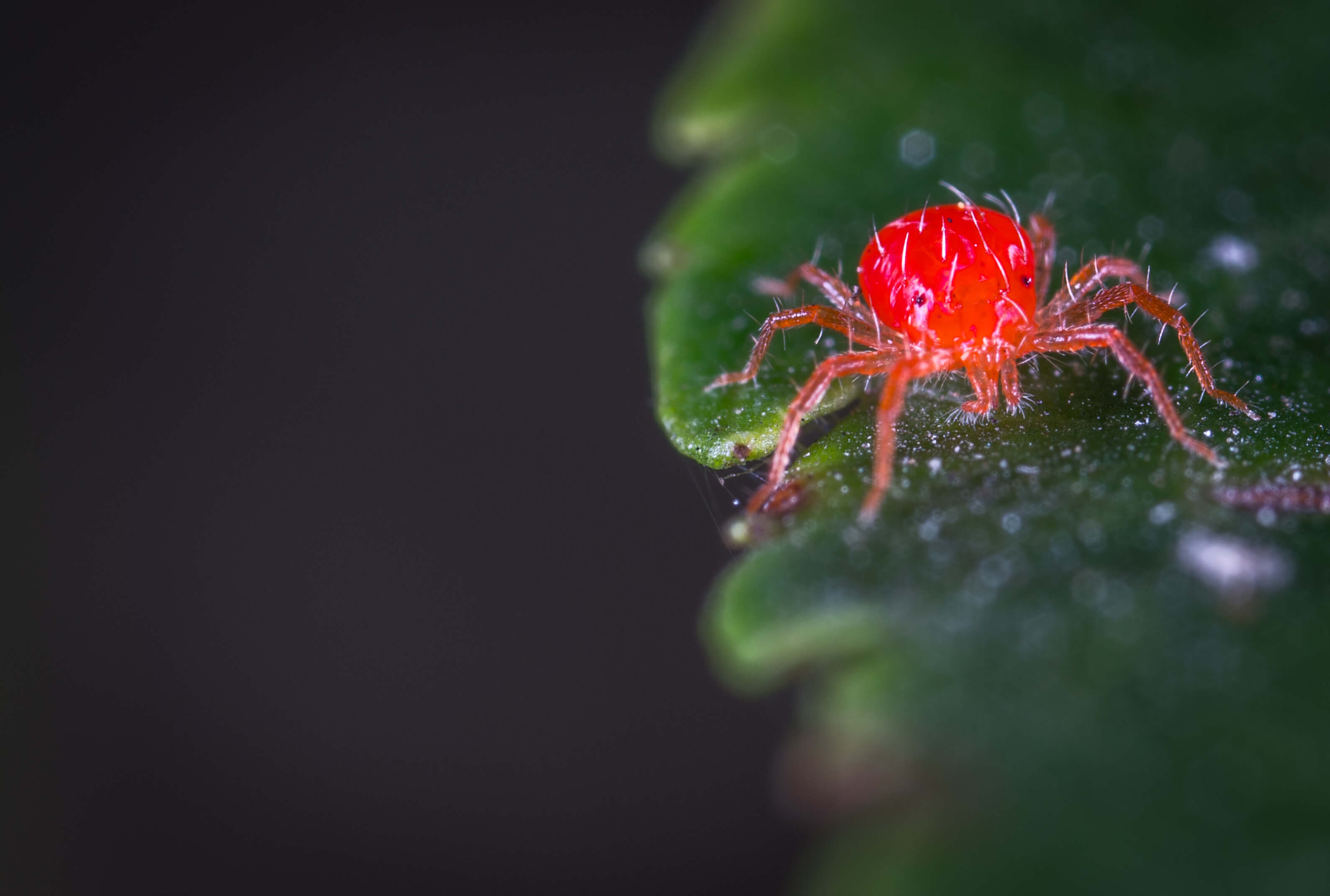
Visible mite damage on an Albert Spruce.
Red Spider Mites will attack a wide variety of plants, particularly Alberta Spruce, hemlock, arborvitae and boxwoods. Mites love to live in hot dry environments — often when we have a summer drought their populations will explode. Mites are so small that they are often kept in check with heavy rains which will drown or wash them away.
Lifecycle
The brown eggs of the spider mite overwinter in and around bud scales and at the base of needles. These hatch in the spring, usually before new growth starts. A generation from egg to adult may require 15-20 days and generations frequently overlap so that all stages may be found on host plants during late spring and early summer. There are 7-10 generations produced each year.
Keep a Watchful Eye on Your Garden
Though tiny mites are hard to see with the naked eye, their damage is very noticeable:
- • As they suck the plant foliage it will turn yellow and then brown.
- • Damage is typically on the southern side of plants where the sun provides the hot habitat they prefer.
- • Generally gardeners may first think that the plant is drying out and provide water to the root system.
- • When the damage continues to spread they may assume the plant is being attacked by an insect and spray some kind of insecticide.
- • However, not only are mites immune to insecticides, the treatment will often kill beneficial insects that feed on mites, thus making the problem worse. (Ladybugs are voracious killing machines designed by nature to clean your garden of over a dozen pests, especially aphids and spider mites. They will also eat a broad range of soft bodied insects including beetle and moth larvae.)

Hold a sheet of white paper under the damaged plant area and lightly bounce the foliage over it. If there are mites, some will fall onto the paper.
Confirm the Pest
If you suspect mites might be causing the plant damage, the easiest way to confirm is the “white paper check.” Put a piece of white paper on a clipboard, hold it under the area of plant damage and lightly bang or bounce the foliage over the paper. If there are mites on the plant, some will fall onto the paper. You may see tiny red dots moving across the paper, but the easiest way to see them is rub your hand over the paper. As you squish the mite a red streak will spread across the white paper, indicating the presence of mites on your plant.
Control and Treat Appropriately

The helpful and lucky ladybug can easily become a casualty when treating for mites with insecticides.
There are miticides that will control mites, but what I like to use is a friendlier remedy: horticultural oil or soap. In fact, a couple of ounces of dish soap mixed in water and sprayed on the plant will often control the problem. An annual treatment of Dormant Oil in the spring can help keep mite populations under control.
If you have any plant care concerns, please email me or stop in at Redding Nursery. Krista and I will be delighted to help.



Recent Comments